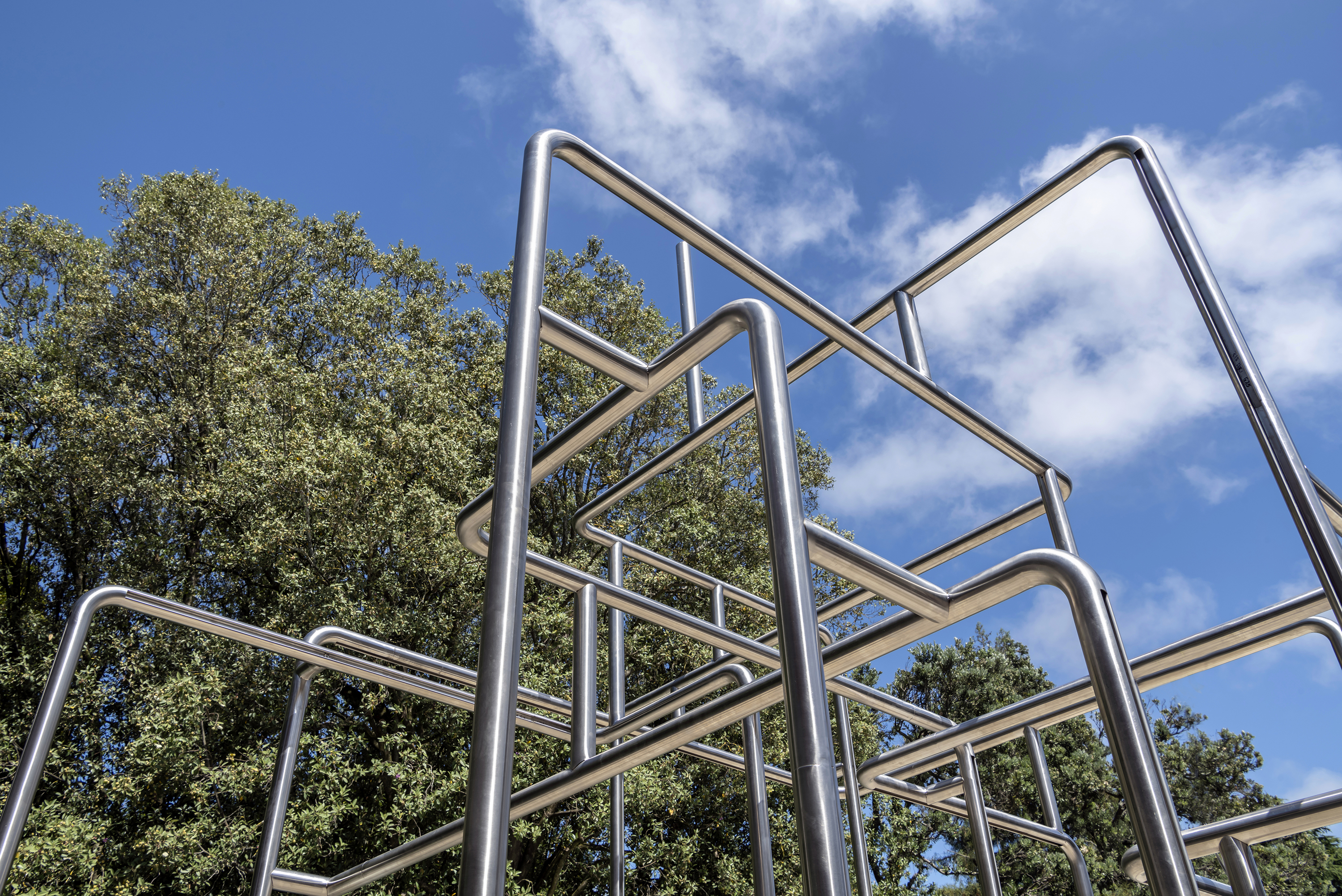This media release originally issued on Wednesday 9 February 2022 was updated on Thursday 31 March 2022 to reflect a new close date of Sunday 28 August 2022.
Thursday 31 March
Auckland Art Gallery Toi o Tāmaki is excited to announce its first new exhibition opening for 2022, showcasing the work of Yona Lee, a New Zealand-Korean artist with a growing international reputation. Opening in late February, Yona Lee: An Arrangement for 5 Rooms is the artist’s most ambitious solo exhibition to date.
Within the context of a global pandemic, restricted borders, and a changing relationship to public and private spaces, Yona Lee: An Arrangement for 5 Rooms negotiates the relationship we share with domestic and public spaces and objects. The five rooms of the Gallery’s park-side exhibition spaces take the meandering visitor on a journey through both densely and sparsely filled rooms.
Constructed entirely from stainless-steel tube, Lee picks up the signature handrail of the Gallery’s architecture and weaves it playfully through the building, turning it into sculpture, and supplying new seating and lighting for visitors. She even pushes the railing into Albert Park where it knots and pauses in the shade of a neighbouring tree. Incorporating familiar signs, like the fabric of Auckland Transport seating and bus bells, this new sculptural installation will interweave common experiences of transit for many across the Auckland region.
‘Yona’s work has a certain whimsy and playful sense of the uncanny to it, cleverly responding to the Gallery’s architecture, and enlivening our spaces. I am looking forward to visitors experiencing her work – both in the Gallery and in our neighbouring Albert Park,’ says Auckland Art Gallery Director Kirsten Lacy.
‘My ambition for this project is to activate the whole building. To break down the barriers between what is art and non-art, the inside and outside, the day and night, and the public and private. The highlight of the work is where it transitions from the inside to the outside. There is a sense of freedom in this moment that I believe is necessary for this current environment’ says Lee, prior to the exhibition’s opening.
This new work builds upon Lee’s highly regarded In Transit series, which she developed in Seoul during her first return visit to South Korea to undertake residencies in 2016. Seoul is widely regarded as having the world’s most extensive subway system and Lee used that as inspiration to develop a strong sculptural language for her artistic practice and voice.
With its narratives of life, music and movement from the perspective of a young Korean New Zealand artist, often literally in transit for work, Yona Lee: An Arrangement for 5 Rooms solicits migration stories familiar to many New Zealanders who may have relocated to temporary premises in new urban environments, inspiring new materials and ideas for living in a new home, yet maintaining some hallmarks of that migratory spirit,’ says Natasha Conland, the Gallery’s Curator, Contemporary Art.
Based on the stainless-steel tube system designed as both handrail and barrier in dense urban environments to create efficient travel, Lee uses her materials to provide an alternative map of living. The sculptural system is used by Lee as a kit-set living system to guide visitors through imaginary transport networks, homes and urban spaces.
The commission is a story of intimacy brought from Lee’s experiences in Seoul and repurposed within the New Zealand urban environment. With familiar signs like the seating-fabric from Auckland Transport and the city’s outdoor seating, Yona Lee: An Arrangement for 5 Rooms will incorporate common experiences for many across the city.
'Not only will this large-scale sculpture introduce new audiences to Yona Lee’s work in Auckland – her hometown – but also continue a successful template for solo sculpture commissions at the Gallery, extending artistic practice and providing effective avenues for new ambitious work,’ adds Lacy.
Open from Saturday 26 February, Yona Lee: An Arrangement for 5 Rooms is proudly supported by the Contemporary Benefactors and the Asia New Zealand Foundation.

